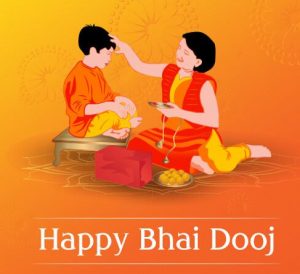Calendar
| Sun | Mon | Tue | Wed | Thu | Fri | Sat |
|---|---|---|---|---|---|---|
| GOVARDHAN PUJA (ANNAKUT) GOVARDHAN PUJA (ANNAKUT) Nov 1 all-day 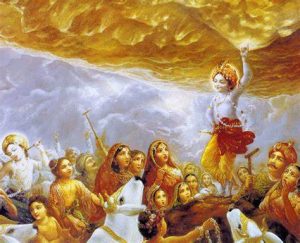 The fourth day of Diwali: Padwa & Govardhan Puja On this day, Govardhan Pooja is performed. Many thousands of years ago, Lord Krishna caused the people of Vraja to perform... | ||||||
| Sunday Bhajan and Satsang 11:30 am Sunday Bhajan and Satsang Nov 3 @ 11:30 am – 1:00 pm  Every Sunday, we have SATSANG (Bhajans, kirtans, Kathas etc.) From 11:30 AM – 01:00 PM followed by Aarti and Prasadam (Lunch) | ||||||
| Sunday Bhajan and Satsang 11:30 am Sunday Bhajan and Satsang Nov 10 @ 11:30 am – 1:00 pm  Every Sunday, we have SATSANG (Bhajans, kirtans, Kathas etc.) From 11:30 AM – 01:00 PM followed by Aarti and Prasadam (Lunch) | DURGA MATA KI CHOWKI 5:00 pm DURGA MATA KI CHOWKI Nov 16 @ 5:00 pm – 10:00 pm 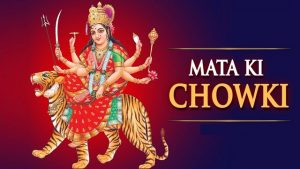 If you would like to host the Mata Ki Chowki at Shree Radhey Shyam Temple, Contact : Raja Sharma 708-822-6656 Maa Durga is revered as the Mother Goddess among the Hindu... | |||||
| TULASI VIVAH TEMPLE CELEBRATION 11:00 am TULASI VIVAH TEMPLE CELEBRATION Nov 17 @ 11:00 am – 2:00 pm 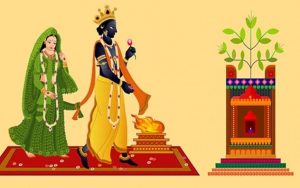 Tulasi Vivah – TEMPLE CELEBRATION ON SUNDAY Tulsi Puja plays a very significant role for Hindus. It is believed that on this day, Lord Vishnu married Goddess Tulsi in the... Sunday Bhajan and Satsang 11:30 am Sunday Bhajan and Satsang Nov 17 @ 11:30 am – 1:00 pm  Every Sunday, we have SATSANG (Bhajans, kirtans, Kathas etc.) From 11:30 AM – 01:00 PM followed by Aarti and Prasadam (Lunch) | ||||||
| Sunday Bhajan and Satsang 11:30 am Sunday Bhajan and Satsang Nov 24 @ 11:30 am – 1:00 pm  Every Sunday, we have SATSANG (Bhajans, kirtans, Kathas etc.) From 11:30 AM – 01:00 PM followed by Aarti and Prasadam (Lunch) |

Tulasi Vivah
Tulsi Puja plays a very significant role for Hindus. It is believed that on this day, Lord Vishnu married Goddess Tulsi in the form of Shaligram or his Shri Krishna avatar on Prabodhini Ekadashi. As per the Hindu scriptures, Tulsi Mata is said to be the avatar of Goddess Lakshmi who is the wife of Lord Vishnu. She took birth as Vrinda, as the legends say. Hence, this day is considered to be the most auspicious day for conducting rituals and ceremonies related to marriage along with Kanyadaan.
Married women across India perform the Tulsi Vivah puja for the well-being of their husbands and family members. The Hindus worship the tulsi plant, and Tulsi herself is thought to be an incarnation of Goddess Mahalakshmi, who was previously known as ‘Vrinda.’ To obtain marital bliss, young women pray to Goddess Lakshmi with full dedication. Young, unmarried women also follow Tulsi Vivah rituals in order to find good husbands. Also, many schedule their marriage on Tulsi Vivah day as it blesses the couple with blissful married life.
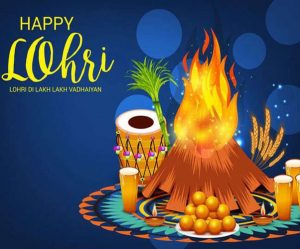
06.00 pm – 08.00 pm Bhajan and Lohri Celebration
07.00 pm Arti followed by Prasad
It is believed by many that the festival marks the passing of the winter solstice. Lohri marks the end of winter, and is a traditional welcome of longer days and the sun’s journey to the northern hemisphere by people in the northern region of the Indian subcontinent. It is observed the night before Maghi, also known as Makar Sankranti, and according to the solar part of the lunisolar Vikrami calendar and typically falls about the same date every year (13 January).
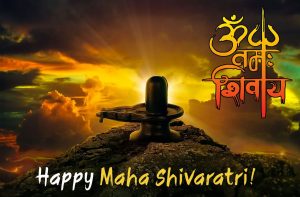
Shivaratri is great festival of convergence of Shiva and Shakti. It is believed that Maha Shivratri falls on such an auspicious day in the northern hemisphere that it raises a person’s spiritual power. Maha Shivratri also celebrates when Lord Shiva performed the “Tandav,” the cosmic dance.
Vrat Vidhi
One day before Shivaratri Vratam, most likely on Trayodashi, devotees should eat only one time. On Shivaratri day, after finishing morning rituals devotees should take Sankalp (संकल्प) to observe full day fast on Shivaratri and to take food next day. During Sankalp devotees pledge for self-determination throughout the fasting period and seek blessing of Lord Shiva to finish the fast without any interference. Hindu fasts are strict and people pledge for self-determination and seek God blessing before starting them to finish them successfully.
On Shivaratri day devotees should take second bath in the evening before doing Shiva Puja or visiting temple. Shiva Puja should be done during night and devotees should break the fast next day after taking bath. Devotees should break the fast between sunrise and before the end of Chaturdashi Tithi to get maximum benefit of the Vrat.

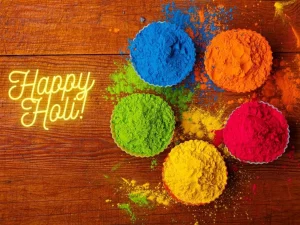
Holi ( /ˈhoʊliː/), also known as the Festival of Colours, the Festival of Spring, and the Festival of Love, is an ancient Hindu religious festival and one of the most popular festivals in Hinduism. It celebrates the eternal and divine love of Radha Krishna. The day also signifies the triumph of good over evil, as it commemorates the victory of Lord Vishnu as Narasimha Narayana over Hiranyakashipu. It originated and is predominantly celebrated in the Indian subcontinent but has also spread to other regions of Asia and parts of the Western world through the Indian diaspora.
Holi celebrates the arrival of spring, the end of winter, the blossoming of love and for many, it is a festive day to meet others, play and laugh, forget and forgive, and repair broken relationships. The festival is also an invocation for a good spring harvest season. It lasts for a night and a day, starting on the evening of the Purnima (Full Moon Day) falling in the Hindu calendar month of Phalguna, which falls around the middle of March in the Gregorian calendar. The first evening is known as “Holika Dahan” or “Chhoti Holi” and the following day as “Holi”, “Rangwali Holi”, “Dol Purnima”, “Dhuleti”, “Dhulandi”, “Ukuli”, “Manjal Kuli”, “Yaosang”, “Shigmo”, “Phagwah”, or “Jajiri”.
Holi celebrations start on the night before Holi with a Holika Dahan where people gather, perform religious rituals in front of a bonfire, and pray that their internal evil be destroyed the way Holika, the sister of the demon king Hiranyakashipu, was killed in the fire. The next morning is celebrated as Rangwali Holi (Dhuleti) where people smear and drench each other with colours. Water guns and water-filled balloons are often used to play and colour each other, with anyone and anyplace being considered fair game to color. Groups often carry drums and other musical instruments going from place-to-place singing and dancing. Throughout the day people visit family, and friends and foes come together to chat, enjoy food and drink, and partake in Holi delicacies.
According to Hindu scriptures, Lord Brahma started the creation of the world from the month of Chaitra, which is regarded as the first month of the Hindu calendar. It marks the beginning of the new season when new flowers and fruits start to blossom. Chaitra month fall in March- April, when the Sun starts its journey through the Zodiac cycle. Some people believe that Goddess Durga descended on the first day of Chaitra Navratri and Brahma started the work of creation of the universe at the behest of Mother Durga. Another belief is that Lord Shiva allowed his wife Durga to visit her parent’s house for nine days (Chaitra Navratri). During these nine days, it is said that the Goddess killed demon Mahishasura. This signifies the victory of good over evil. It is customary for Hindu women to visit their parents’ home during this auspicious time.
Maharashtran Hindus refer to the festival, observed on the same day, as Gudi Padwa (Marathi: गुढी पाडवा).
The Sindhis celebrate the same day as Cheti Chand, which is the beginning of their calendar year.
Manipuris also celebrate their New Year as Sajibu Nongma Panba on the same day.
The Hindus of Bali in Indonesia also celebrate their new year on the same day as Nyepi.
Ugadi is one of the five Hindu national public holidays in Mauritius
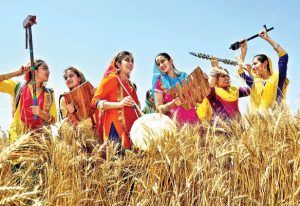
Vaisakhi is a harvest festival for people of the Punjab region. In the Punjab, Vaisakhi marks the ripening of the rabi harvest. Vaisakhi also marks the Punjabi new year. This day is observed as a thanksgiving day by farmers whereby farmers pay their tribute, thanking God for the abundant harvest and also praying for future prosperity.
Vaisakhi is traditionally observed on 13 or 14 April, every year. For many Hindus, it marks the solar new year.

Ram Navami Rituals: Hindu Culture & Traditions
This festival is observed in order to celebrate the birth of Marayada Purshottam Ram, considered to be a form of Lord Vishnu, one of the prime deities of Hindu trio. It is said that, Lord Rama is not only god but also the ideal figure for a human being. He is considered to be an ideal son, a doting husband, a mighty king, a wonderful brother and a great father. On the occasion of Rama Navami, mot only the people in India but also the Hindu community living in the other parts of the world celebrate this great day with immense joy and fervor.
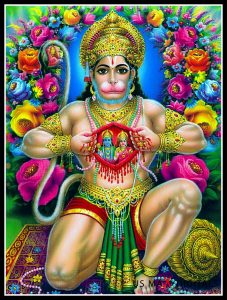
Hanuman Jayanti celebrates the birth of Lord Hanuman. Hanuman was the son of Anjana, a female spirit of the clouds and waters, and Desari, the chief of the vanara, a group of powerful monkey people who lived in the forests. The wind god Vayu also played a role in the conception and birth of Hanuman. Some texts identify Hanuman as an incarnation of Shiva, but Hanuman is best known for his role in the epic poem and sacred text the Ramayana.
Hanuman is worshipped as a deity with the ability to attain victory against evil and provide protection. On this festival, devotees of Hanuman celebrate him and seek his protection and blessings.
Mother’s Day is a celebration of honouring mothers and motherhood and is observed across the world with enthusiasm and verve. The day is celebrated to acknowledge and honour the sacrifices a mother makes during the course of her life to ensure absolute well-being and development of her children. Throughout the world, children exhibit their respect and affection by pampering their mother with gifts, giving flowers, having dinner and spending the whole day with her.

